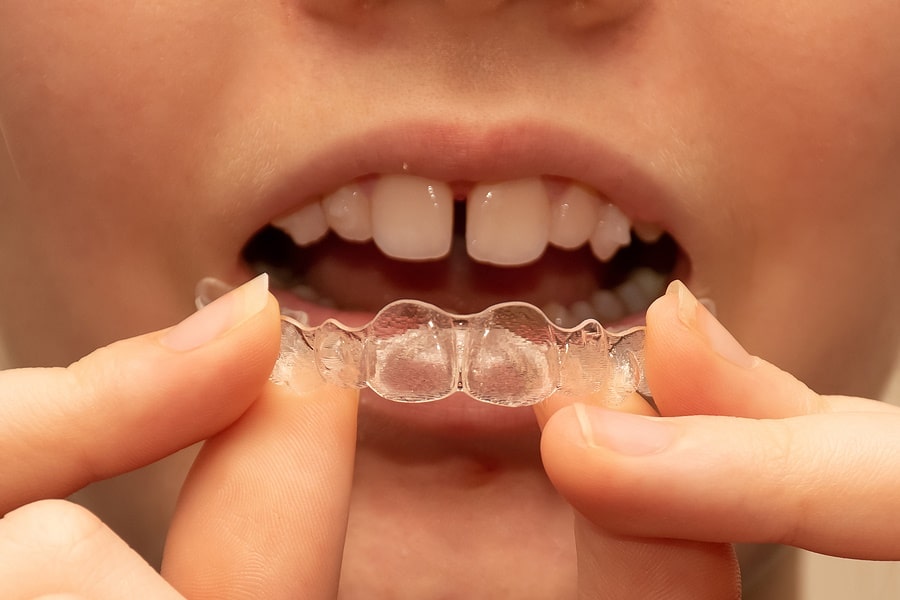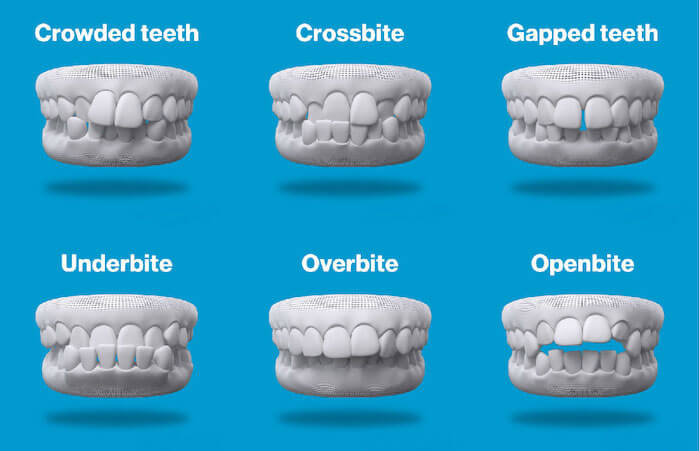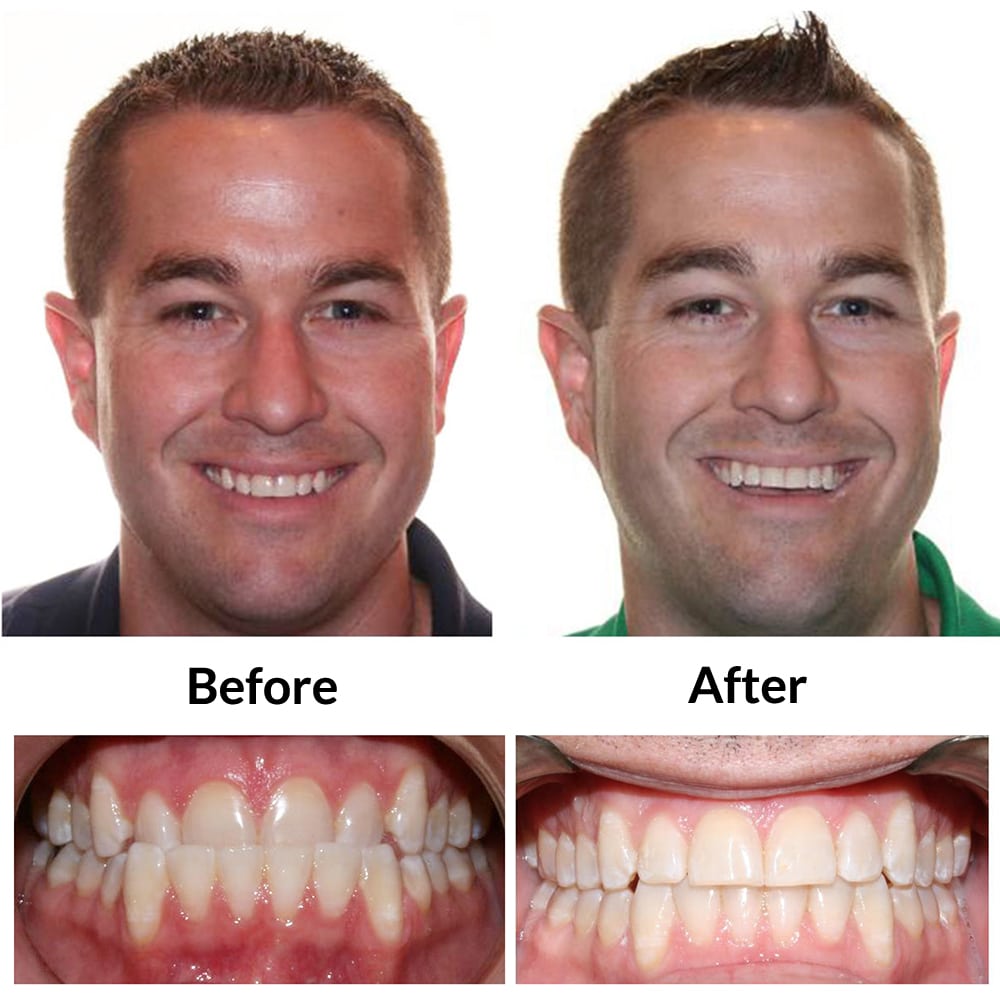The Price of Invisalign: Recognizing the Investment in Your Smile
The Price of Invisalign: Recognizing the Investment in Your Smile
Blog Article
Invisalign vs. Conventional Braces: Which Option Is Right for You?
When thinking about orthodontic treatment, the selection in between Invisalign and conventional braces offers numerous essential aspects that merit cautious evaluation. Invisalign uses a discreet choice with detachable aligners, while typical braces supply a much more visible yet efficient service for extreme misalignment. Each alternative incorporates distinctive advantages and disadvantages associated with visual appeals, convenience, treatment period, and price. Comprehending these subtleties is crucial for making a notified decision that straightens with your individual preferences and way of living. The inquiry continues to be: which choice will finest satisfy your orthodontic demands and expectations?
Introduction of Therapy Choices

On the other hand, conventional dental braces include steel braces and wires that are bonded to the teeth. This technique uses continuous pressure with time to accomplish alignment. While effective for complex orthodontic problems, conventional braces need routine check outs for adjustments and can posture difficulties in maintaining oral health due to the difficulty of cleansing about braces and cords.
Both alternatives have their qualities, and the selection frequently pivots on particular dental problems, lifestyle choices, and person compliance. Ultimately, getting in touch with an orthodontic professional is critical for determining one of the most ideal treatment plan customized to private demands. Understanding the nuances of each alternative can significantly influence the general success of orthodontic therapy.
Visual Factors To Consider
A considerable variable influencing the choice in between Invisalign and conventional braces is the visual appeal each treatment supplies. Invisalign aligners are crafted from clear plastic, making them practically undetectable when put on.
On the other hand, traditional braces contain metal braces and wires, which can be much more obvious. While developments in orthodontic innovation have actually resulted in the growth of smaller sized brackets and tinted elastics, traditional braces still preserve a more noticeable profile. For some people, the presence of dental braces might discourage them from looking for required therapy.
Inevitably, the selection between Invisalign and typical dental braces might hinge on individual choices pertaining to looks. People who focus on discernment frequently lean toward Invisalign, while those who are less worried concerning exposure might select standard braces. Recognizing the aesthetic ramifications of each option is crucial for making a notified choice that straightens with one's way of life and preferences.
Comfort and Convenience

In terms of benefit, Invisalign aligners are removable, enabling people to appreciate their preferred foods without restriction and keep ideal dental health. Brushing and flossing are streamlined, as the aligners can be secured throughout these regimens, whereas conventional braces need cautious maneuvering around brackets and cables.
In comparison, standard braces require routine adjustments, making them less hassle-free for those with active timetables. On the whole, the convenience and benefit of Invisalign make it an appealing selection for numerous people looking for orthodontic therapy.
Treatment Duration and Efficiency
While both Invisalign and standard braces work in fixing oral misalignments, the duration of treatment can differ considerably in between both choices. Usually, Invisalign therapy can take anywhere from 12 to 18 months, relying on the complexity of the case. The clear aligners work by slowly shifting teeth into their preferred placements, check this site out and regular follow-ups with an orthodontist assistance ensure development remains on the right track.
On the other hand, traditional dental braces typically require a longer commitment, typically varying from 18 months to 3 years. This results from their set nature and using cables and brackets, which can be much more reliable for serious misalignments and complicated situations (Invisalign). The therapy efficiency of conventional braces is well-documented, as they enable precise changes and greater control over tooth motion
Ultimately, the choice in between Invisalign and traditional braces may pivot on both the anticipated therapy period and wikipedia reference the certain dental concerns available. Consulting with an orthodontist is critical, as they can offer tailored suggestions based on private requirements, guaranteeing the chosen technique lines up with wanted results and durations.
Price Comparison and Insurance Coverage Alternatives
Expense plays a significant function in the decision-making process for individuals thinking about orthodontic therapy, whether selecting Invisalign or traditional dental braces. Typically, the expense of Invisalign arrays from $3,000 to $8,000, while typical dental braces normally cost in between $2,000 and $6,000. Variables affecting these prices consist of the intricacy of the case, the period of therapy, and geographical place.
Numerous dental insurance coverage plans provide partial insurance coverage for orthodontic treatments, however the specifics can vary widely. Normally, traditional braces may be extra regularly covered by insurance policy plans compared to Invisalign, More about the author which some insurance companies classify as a cosmetic treatment.
Additionally, several orthodontic methods use flexible repayment plans, making both treatment options much more obtainable. Clients must ask about potential funding alternatives and discounts for upfront repayments. Assessing the overall expense, consisting of insurance coverage advantages and layaway plan, is necessary for making a notified decision that aligns with both aesthetic choices and budget plan considerations.

Final Thought
In summary, the selection in between Invisalign and typical dental braces hinges on several factors, including visual preferences, convenience, treatment period, and price. Invisalign provides a discreet, detachable alternative that assists in oral health and nutritional flexibility, while typical dental braces may be better for complex oral problems and typically come at a reduced rate factor. Ultimately, assessment with an orthodontist is vital to evaluate specific situations and determine one of the most suitable treatment option for achieving optimal dental alignment.
When thinking about orthodontic treatment, the option in between Invisalign and standard dental braces provides several crucial factors that warrant mindful examination.Contrasting Invisalign and typical dental braces discloses distinct treatment options for orthodontic improvement.While both Invisalign and conventional dental braces are effective in fixing oral imbalances, the duration of therapy can differ considerably in between the two options.Expense plays a considerable function in the decision-making procedure for people considering orthodontic treatment, whether choosing for Invisalign or standard braces.In summary, the choice in between Invisalign and standard dental braces pivots on multiple variables, consisting of aesthetic preferences, comfort, therapy duration, and expense.
Report this page